What to Do in Morocco: Where to Visit and What to See

Morocco’s vibrant colors, bustling energy, and intoxicating aromas captivate anyone lucky enough to visit. Each region, city, and village offers its own unique character, shaped by centuries of Amazigh, Arab, Andalusian, and French influence. Between the blue-washed walls of Chefchaouen in the Rif Mountains, the red sandstone architecture of Marrakech’s medina, and the stark, rolling dunes of the Agafay Desert, Morocco is a treasure trove of culture waiting to be discovered. That’s not to mention the cities of Casablanca (the main economic hub), Fez (home to the oldest university in the world), and Rabat, the country’s capital.
What to Do in Morocco
In short, there are many things to do in Morocco, and today at Civitatis, we’re looking at the must-dos, along with some hidden gems to help you plan your perfect Moroccan adventure. يلا، نشوفو شنو كاين!
1. Marrakech – the Red City
When planning a trip to Morocco, Marrakech is often the first stop on a traveller’s itinerary, and for good reason. The magic of the ‘Red City‘ begins at dawn when the first rays of sunlight illuminate the clay buildings that give the city its famous hue. When you enter the city’s Medina (the old, walled part of the city), you’ll find yourself in an 11th-century labyrinth of alleyways, old hammams (bath houses), souks (bazaars), mosques, and more. Pass through the bustling Jemaa el-Fna Square. In the evening, this square becomes a street theatre, with various performers, from henna tattooists to snake charmers. A bit further along, you’ll find the Majorelle Garden—the perfect place to catch your breath after the hectic Medina.
There are lots of ways of exploring the Marrakech Medina, be it as part of a private tour of Marrakech, or even on this Marrakech bike tour. That said, given the culinary level in the Medina, we’d recommend this Marrakech food tour, which includes stops at a local bakery, a traditional restaurant, and a pastry shop in the medina.
Still looking for inspiration? Check out our list of the best things to do in Marrakech!
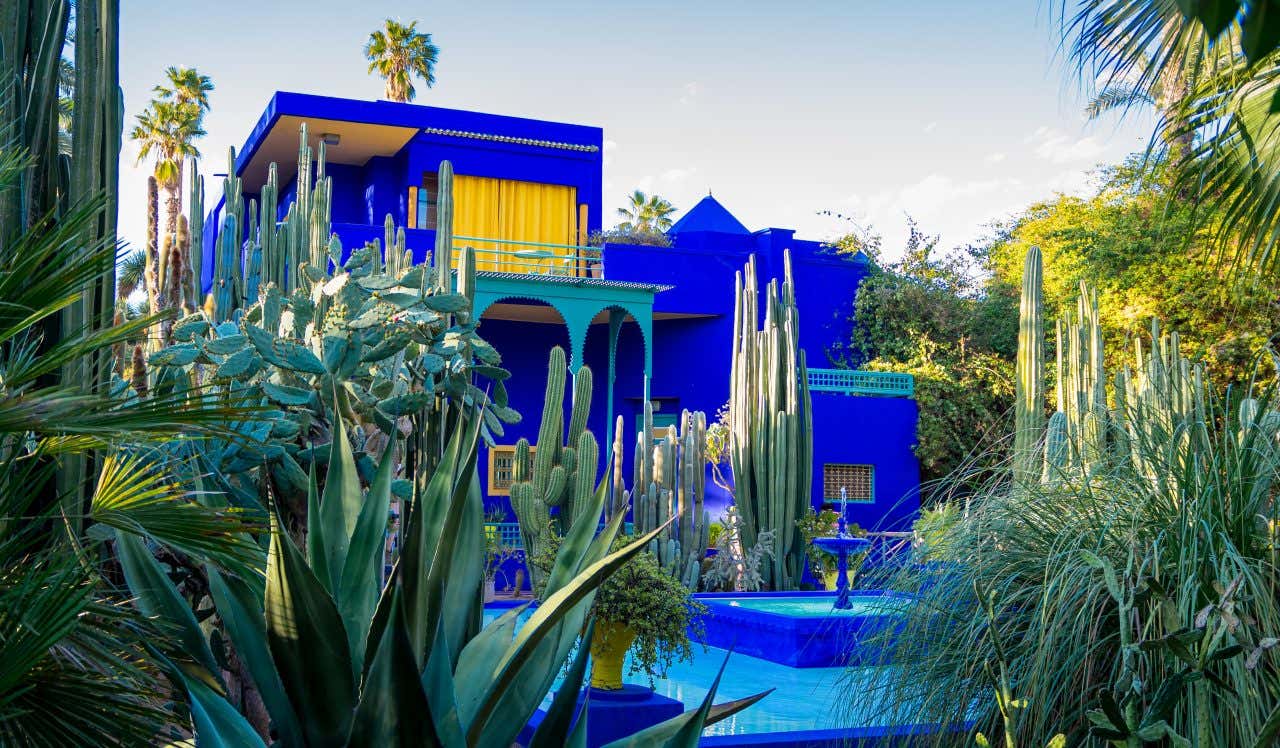
2. Fez – Medieval History, Artesanal Heritage
Fez is considered the cultural and spiritual center of Morocco. The medina in Fez is one of the largest car-free urban zones in the world, showcasing centuries of history in every alleyway. Among the medina’s many highlights is Al Quaraouiyine University, founded in 859 and recognized as the oldest continuously operating university in the world, a testament to Fez’s long history as a hub of learning and innovation. Delve deeper into the city’s history on this Fez guided tour!
Another highlight is the city’s famous tanneries, with vibrantly colored dyeing vats side by side, creating a striking mosaic of color. Here, leather is processed using traditional methods, which have been carefully preserved by generations of highly-skilled artisans. If you want to learn about leather production, we recommend booking a guided tour of Fez for an up-close look at this ancestral process.
Another deeply cultural and highly immersive experience is to visit a traditional hammam, where you can enjoy a steam bath and massage. Also check out this henna experience in Fez + lunch, where you’ll be shown how to mix the natural paste, the basic process of how it’s applied, and the intricate patterns and meanings behind this celebrated art form.
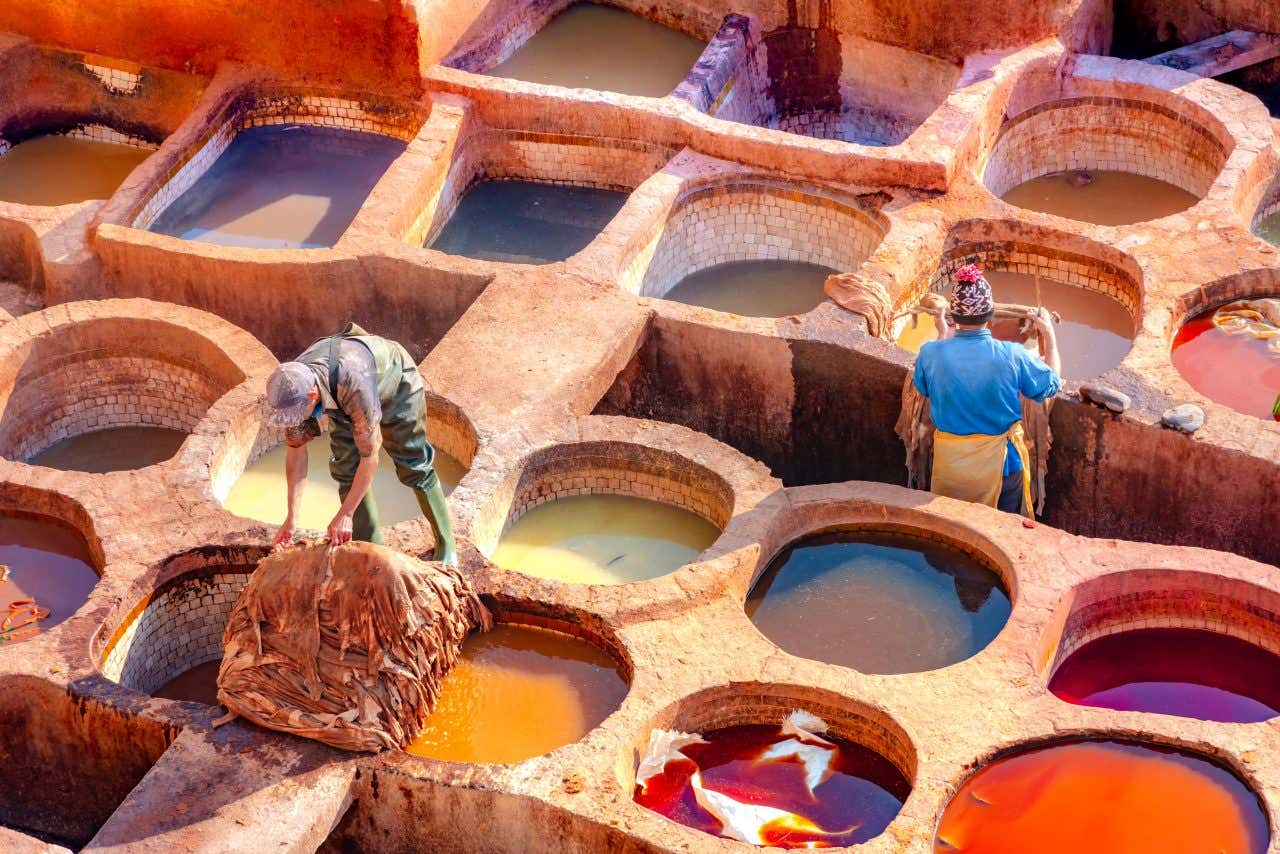
3. Chefchaouen – The Blue Pearl of the Rif
Nestled in the heart of the Rif Mountains, Chefchaouen is one of Morocco’s most enchanting destinations, known for its unusual bright blue buildings. These visually stunning buildings are thought to have been painted their characteristic blue color due to beliefs and practices associated with Judaism. Specifically, a Jewish tradition of weaving blue thread into prayer shawls to remind people of the sky and the heavens.
Wander through its dreamy streets, then follow the path to Ras El Maa, a scenic spot where cool mountain water flows and locals gather to relax. Don’t miss the Grand Mosque in Uta el-Hammam Square, a peaceful place with beautiful architecture and local energy.
Beyond the main sights, Chefchaouen’s charm lies in its details. Tucked into its winding alleys are small artisan workshops. On this leather workshop in Chefchaouen, you’ll gain an insight into one of these workshops, learn some techniques, and even make your own souvenir!
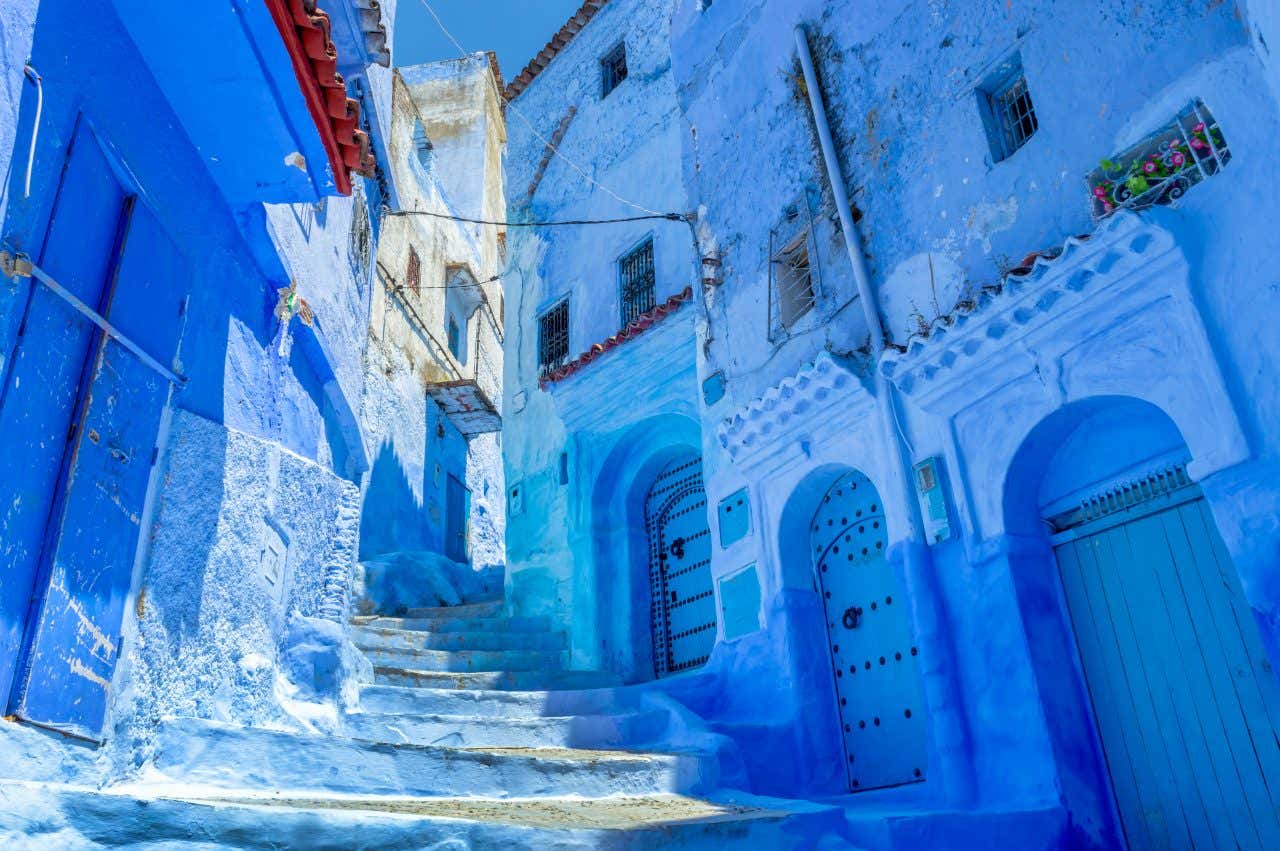
4. The Sahara Desert – A Golden Sea of Sand
A change of pace from Morocco’s vibrant, bustling cities, the Sahara Desert is another must when visiting Morocco, offering a truly once-in-a-lifetime experience. Whether you’re riding a camel across the sand or staying in a traditional camp under the stars, the Sahara has a fascinating, undeniable energy. One of the most magical moments is watching the sun rise or set over the dunes—an experience best enjoyed with a sunrise or sunset desert tour in Merzouga. Another option is this overnight camel trek through the Merzouga desert, which includes an Amazigh drum performance, as well as a traditional dinner and breakfast.
If you are visiting the Sahara, be sure to come prepared for extreme weather conditions: stay hydrated (electrolyte drinks help), wear sunscreen, a turban or scarf, comfortable footwear, and bring a solar charger.
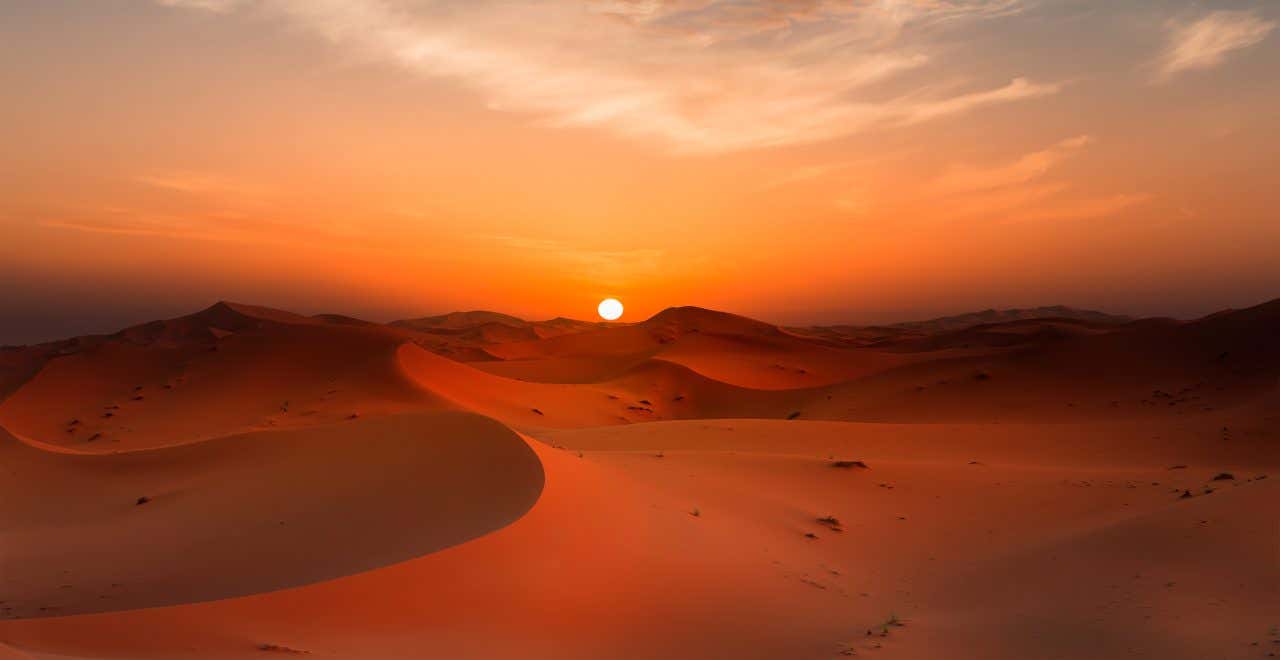
5. Essaouira – Morocco’s Creative Coastal Soul
On the Atlantic coast, Essaouira is a must-visit for lovers of history, art, and nature. With its Portuguese-built walls and a UNESCO-designated Medina, Essaouira is an idyllic destination to visit. It’s also very accessible, with direct flights from all over Europe, including London, Paris, and Brussels, and only a couple of hours’ drive from Marrakech, meaning you can check out the city even on a day trip from Marrakech with Civitatis.
People who find cities like Marrakech a bit too hectic, Essaouira is a nice change of pace. It’s laid back, merchants generally aren’t as pushy, and overall, life is a bit slower. What’s more, Essaouira is a wonderful destination for foodies. On this Essaouira street food tour, you’ll get a taste of some very authentic local food. Being on the seaside, this city is best known for its seafood, so be sure to have some fresh fish and oysters, a local speciality.
Another unmissable spot is the Sqala of the Kasbah, a fortress which dates back to 1765, built to protect the city from invaders coming from the Atlantic. From atop this fortification, the ocean view is simply stunning. Then, get lost in the Medina’s alleyways, where artisan shops and art galleries reflect the creative spirit of this seaside town.
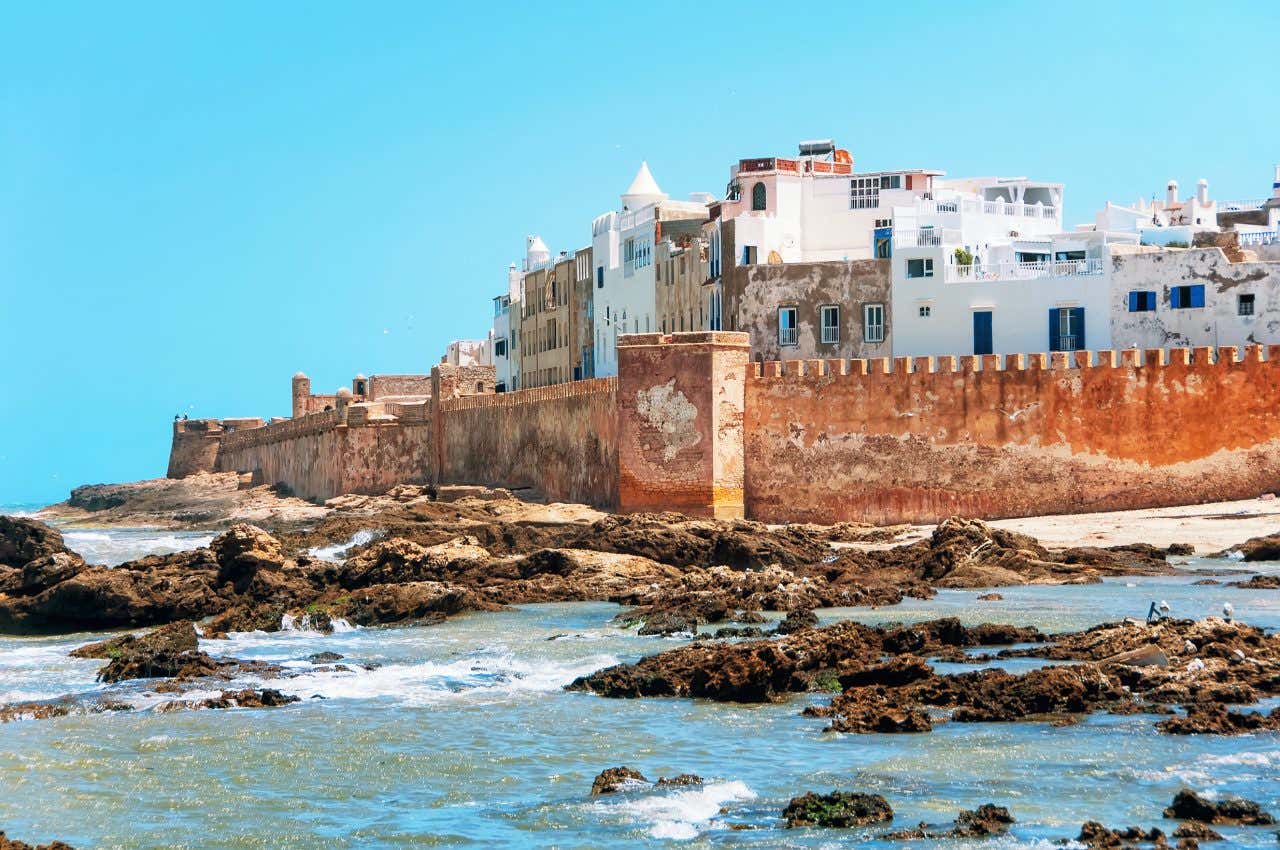
6. Casablanca – Where Modernity Meets Tradition
Our Moroccan journey continues to Casablanca, Morocco’s cultural capital and economic epicenter. This cosmopolitan city is seen as one that contrasts against the ancient Marrakesh and Fez, boasts modern skyscrapers and convention centers, which can put tourists off checking it out. While it’s true that Casablanca is a much more modern city in many ways, it also has a lengthy cultural heritage
The city’s main landmark is the majestic Hassan II Mosque, a gorgeous architectural work. This mosque features a 688-foot (210-meter) minaret, topped by a laser which points to Mecca, as well as stunning ocean views. The second-largest mosque in Africa, and the 14th largest in the word, this building is only accessible to practitioners of Islam. However, even if you’re not Muslim yourself, this building’s exterior architecture alone makes it a worthwhile visit.
Exploring the city on a walking tour or a private tour reveals Casablanca’s striking contrasts. and historic neighborhoods. A highlight is the Habous district, an urban planning project from the 1930s during the French Protectorate era, that still maintains a fascinating French influence.
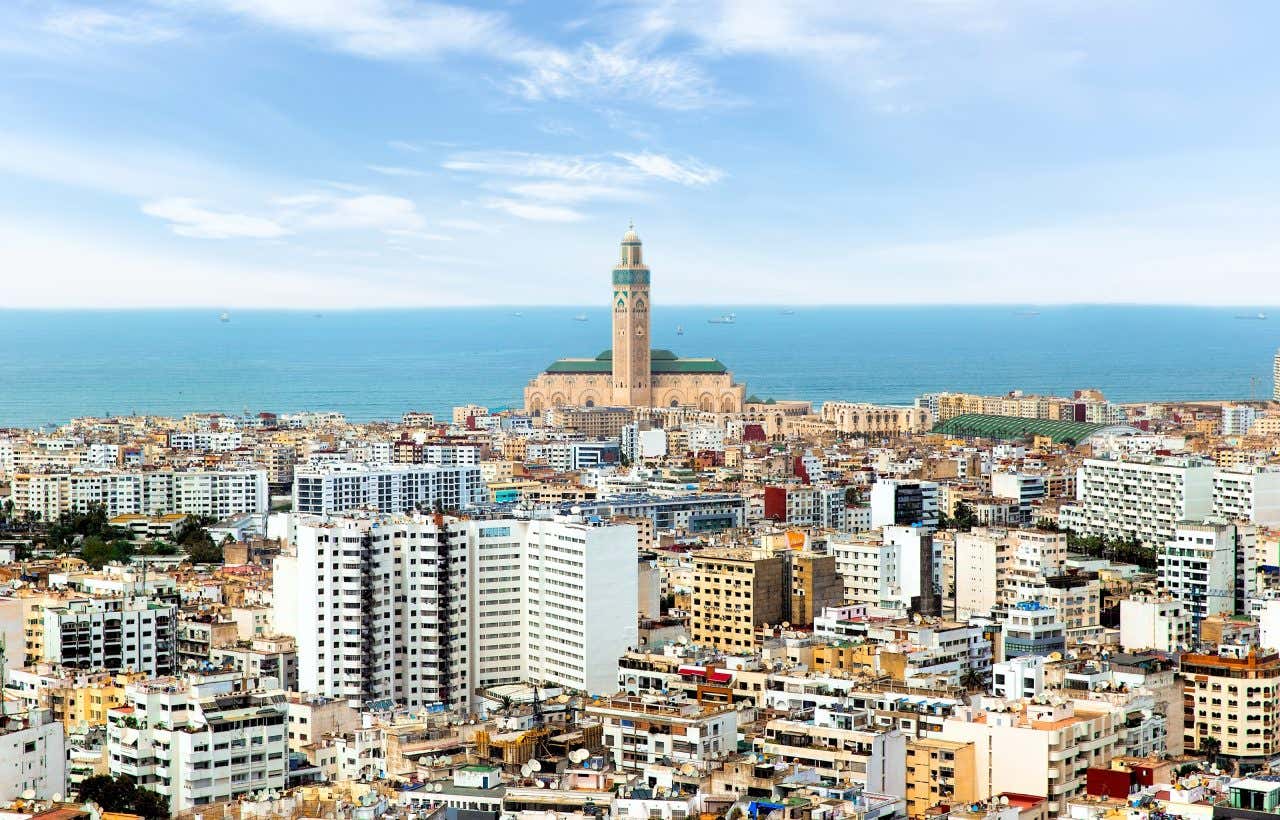
7. Rabat – Timeless Capital Charm
Rabat, Morocco’s capital, is another city that showcases a subtle balance between historical legacy and modern energy. One of its gems is the Kasbah of the Udayas, where whitewashed streets and Andalusian gardens create a charming scene that takes you back in time.
Other noteworthy sites include the Hassan Tower, symbol of an unfinished mosque, and the Mausoleum of Mohammed V, with its stunning marble architecture. A private tour of Rabat is the best way to discover this city’s deep history and also get a taste of this city’s fiery spirit.
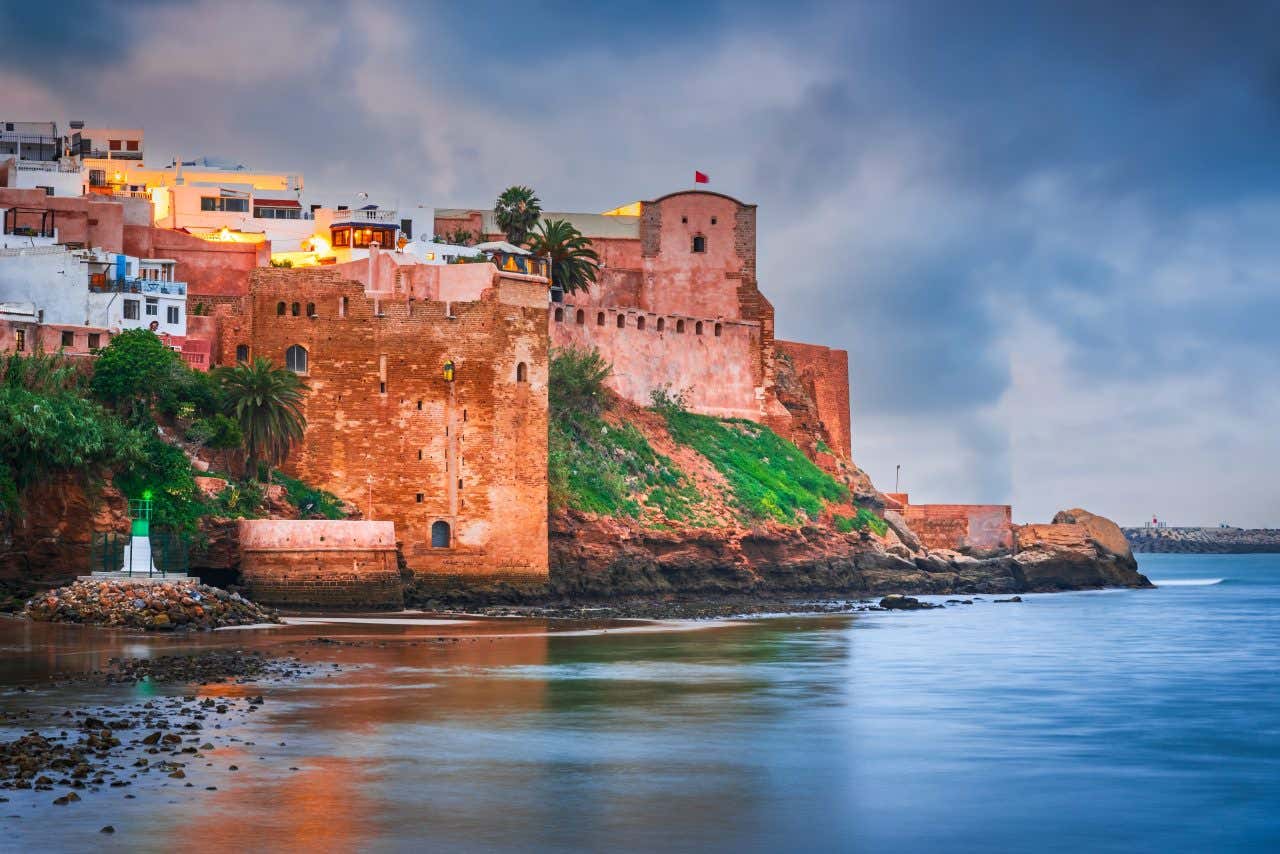
8. Ouarzazate & Aït Ben Haddou: Cinema Meets History
Both located in southern Morocco, Ouarzazate and Aït Ben Haddou offer a glimpse into both the country’s past and its role in modern cinema. Ouarzazate, often called the ‘gateway to the desert,’ has become a favorite location for international film crews. Check out this day trip to Ouarzazate to discover why this city is called the Hollywood of Africa.
Nearby, Aït Ben Haddou rises from the desert with its striking earthen clay buildings. This UNESCO World Heritage Site was once a key stop for caravans traveling between Marrakech and the Sahara. Walking its narrow alleyways feels like stepping into another century.
But there’s more to the region than film sets and ancient walls. Visitors often find themselves sharing mint tea on a rooftop or hearing local legends passed down for generations, all with the desert stretching out around them.
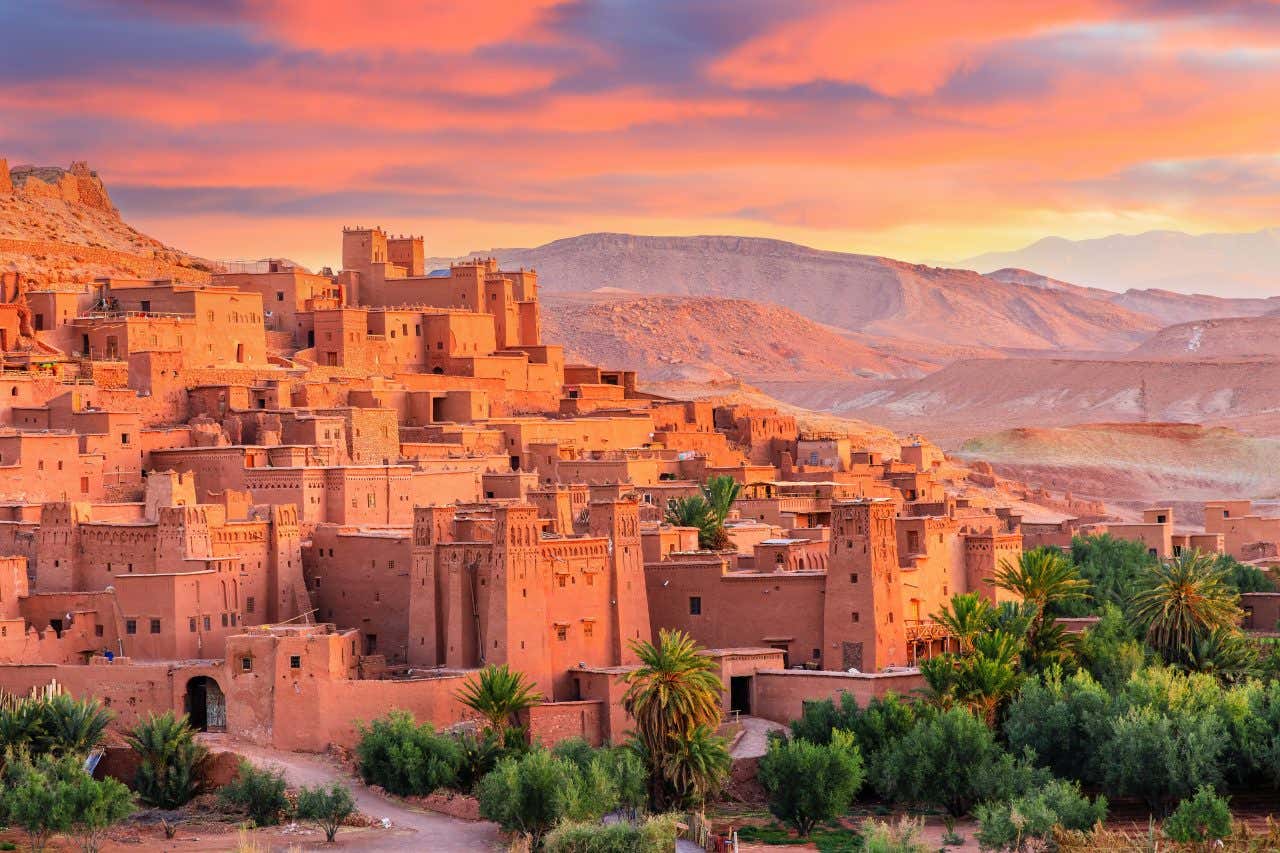
9. Tangier: Gateway Between Europe and Africa
Tangier, located at the western entrance of the Strait of Gibraltar, has been strategically important since Phoenician times. Its architecture reflects a unique blend of Moorish, colonial, and Andalusian styles, narrating centuries of cultural encounters.
In addition to its historical significance, Tangier charms with lively souks, Atlantic beaches, and its always-active port. A guided tour of Tangier will take you through its key sites and help you grasp its unique energy.
Don’t miss a visit to the legendary Café Hafa, perched on a cliff with views of Gibraltar. You can also take an excursion to Cape Spartel, the Caves of Hercules, and Asilah to explore off-the-beaten-path highlights.

10. Meknes – Imperial Grandeur and Hidden History
Meknes is one of Morocco’s four imperial cities, alongside Fez, Marrakech, and Rabat. Rich in history, it was the capital during the reign of Sultan Moulay Ismail (1672–1727). Its historic center, a UNESCO World Heritage Site, is a Moroccan treasure.
At the heart of the city is Bab Mansour, considered one of Morocco’s most majestic gates. Adorned with mosaics and inscriptions honoring the sultan, it reflects the grandeur of his reign. Legend says that when asked if he could have done better, the gate’s architect feared saying “yes” lest he be executed on the spot. If you find yourself in Casablanca, you can uncover these stories on a private tour to Meknes and Volubilis.
Nearby is the Mausoleum of Moulay Ismail, a serene site showcasing Arab-Andalusian architecture and one of the few shrines open to non-Muslims. For a deeper dive into Moroccan history, a tour of the imperial cities is a great option.
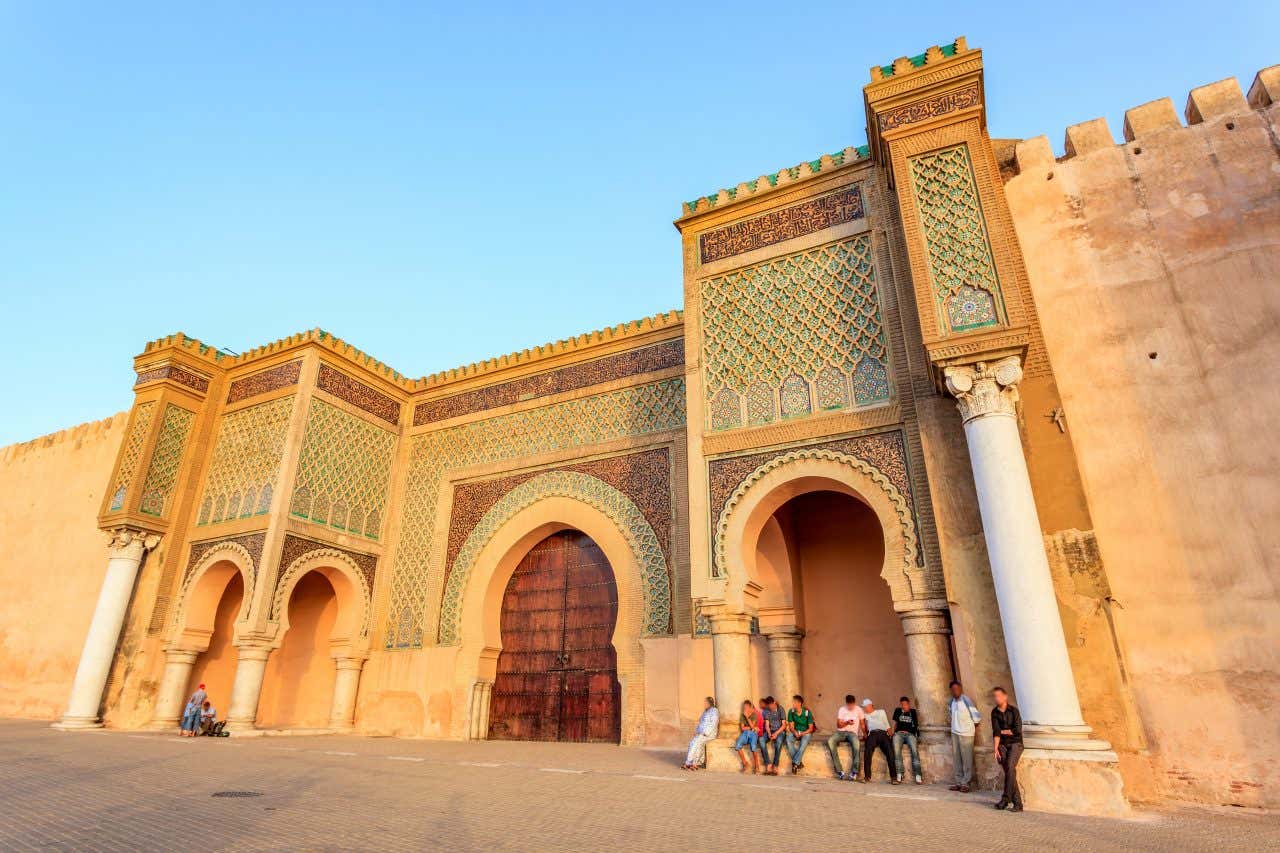
11. Agadir – Morocco’s Seaside Comeback City
Agadir today is best known as a fantastic family beach vacation (and it is), but its history goes so much deeper than that. It’s a true symbol of renewal in Morocco. After being devastated by an earthquake in 1960, the city rose from the rubble and was transformed into a vibrant, modern seaside resort.
However, Agadir has character in spades, and offers unique experiences you don’t get in other beach towns—you’re in Morocco, after all!. Try this sunset camel ride in Agadir’s desert, relax in a traditional Hammam at Argan Palace, or go sandboarding at the Tifnit dunes.
We’d also recommend exploring the town itself on this guided tour of Agadir, which will bring you along the promenade, to the Souk el Had, and the famous Kasbah Fortress.
Take a stroll along the lively boardwalk, unwind on the scenic Corniche, or savor delicious Moroccan dishes in traditional restaurants. For breathtaking views of the city and the surrounding Atlas Mountains, don’t miss the cable car ride up to the historic Kasbah.
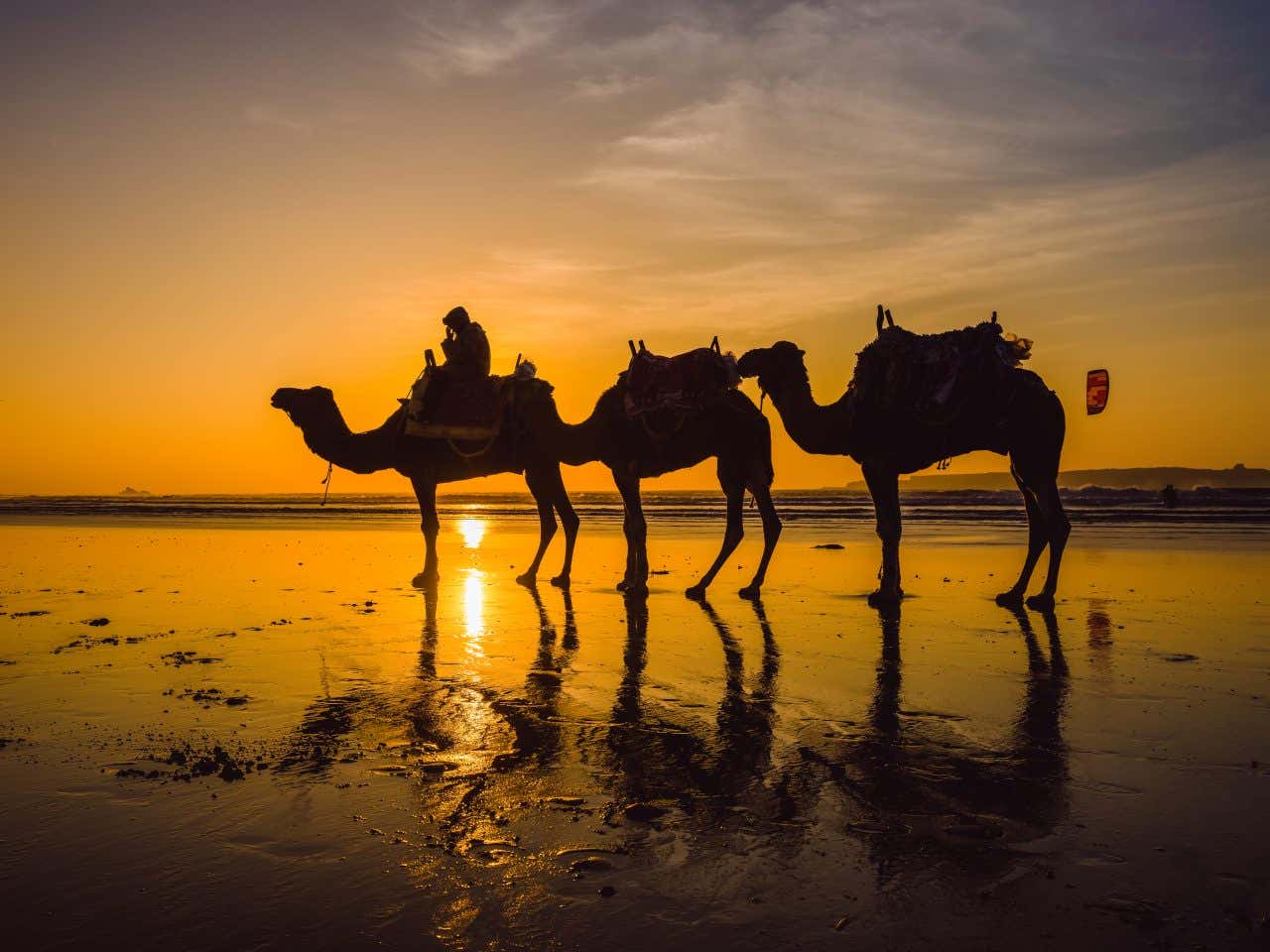
12. Imlil & the Atlas Mountains – A High-Altitude Escape
Our final recommendation for what to do in Morocco is a trip to Imlil, at the foot of the majestic Atlas Mountains. Located at 5,700 feet, 1740 meters above sea level, this is the starting point for adventurous travellers aiming to conquer Mount Toubkal, the highest peak in North Africa. Along the way, the Imlil waterfalls offer refreshing breaks amid stunning scenery.
You can explore the Imlil Valley for yourself as part of this Imlil Village and Kik Plateau day trip from Marrakech, which will bring you to various settlements in the valley, including the village of Imlil itself, a fascinating mountain village heaped with tradition and culture. You’ll see locals riding on mules, and eat incredible local food as you enjoy mountain views.
For a slightly more physical experience of this area, check out this Three Valleys & Atlas Mountains tour + lunch, another day trip from Marrakech, which includes a short trek through the Atlas Mountains, and a traditional Amazigh lunch in a local house!
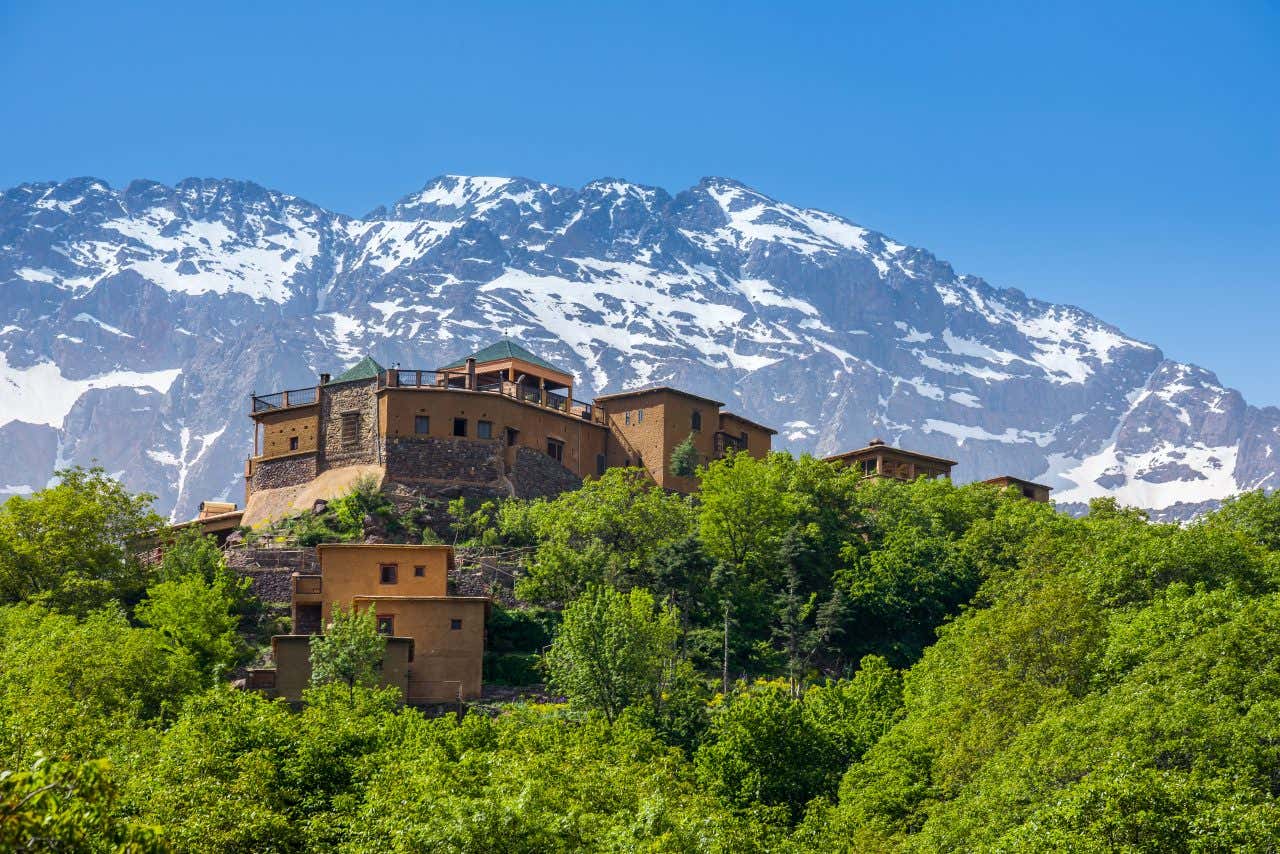
Best Time to Travel to Morocco
The best time to visit Morocco depends on your travel style. Spring (March–May) and Autumn (September–November) are ideal for city exploration and nature, offering pleasant weather. Summer (June–August) is great for beaches, though desert regions get very hot. Winter (December–February) is the best time for hiking and mountain adventures.
Travel Documents for Morocco
Brazilian and Portuguese citizens can enter Morocco visa-free for stays up to 90 days as tourists. A passport valid for at least six months from your date of entry is required. Note that the Portuguese Citizen Card is not accepted as a travel document.
How to Dress in Morocco
In Morocco, modest clothing is recommended, especially in rural areas and religious sites. Light garments that cover shoulders and knees are best for women. For men, casual attire is generally fine, but shorts should be avoided in traditional areas. In major cities like Marrakech or Casablanca, Western styles are more accepted, but cultural respect remains important. Comfortable shoes are essential for exploring souks and trails.
What to Avoid in Morocco
One should avoid public displays of affection, especially in conservative areas. Don’t take photos of people without permission—especially women. Refrain from wearing revealing clothing outside urban centers. Drinking alcohol in public is frowned upon in many places. Respecting local customs is key to a culturally rich and smooth trip.
How Many Days Should You Stay in Morocco?
To make the most of your trip, plan for at least 7 days. This allows time to visit imperial cities like Marrakech and Fez, experience the Sahara Desert, and explore the Atlas Mountains. With more days, you can add destinations like Chefchaouen, Casablanca, and Essaouira.
What to Eat in Morocco
Moroccan cuisine is a sensory journey. Must-try dishes include tagine (slow-cooked meats and vegetables), couscous (often served on Fridays), and pastilla (a sweet and savory pie). For dessert, don’t miss mint tea paired with traditional pastries like kaab el ghazal, chebakia, ghoriba, makrout, or m’hanncha—each combining honey, spices, and almonds for a delicious treat.
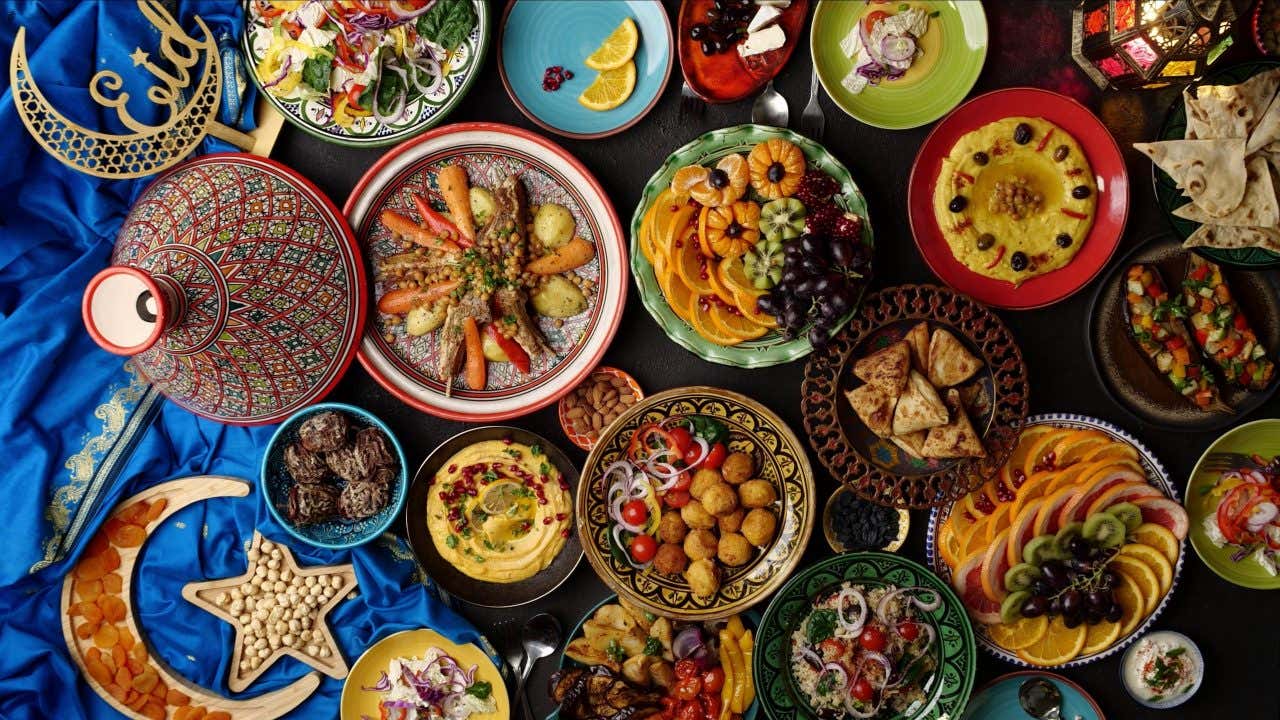
Morocco Tour Packages with Civitatis
Morocco is a multifaceted destination with vibrant culture and rich gastronomy. Whether exploring Marrakech’s souks, the Sahara’s dunes, or mountain villages, there’s always something new to discover. Now, while Morocco is a wonderful place to discover by yourself, it can be a little daunting for inexperienced travellers, especially if you go off the beaten track. If that sounds like you, check out multi-day tour packages with Civitatis, and we’ll do the thinking for you:
- 3-Day Sahara Desert Tour
- Merzouga to Fez Trip: 3 Days
- 4 Day Merzouga Desert Trip
- Private 4-Day Sahara Desert Tour from Fez to Marrakech
- 4-Day Private Trip from Marrakech to Fez
- Imperial Cities of Morocco 7-Day Tour
- Morocco 8-Day Private Tour
There you have it! That’s our list of what to do in Morocco, suitable for all different types of travellers. If you’re still looking for inspiration, check out more tours & experiences in Morocco with Civitatis and fill your trip!





